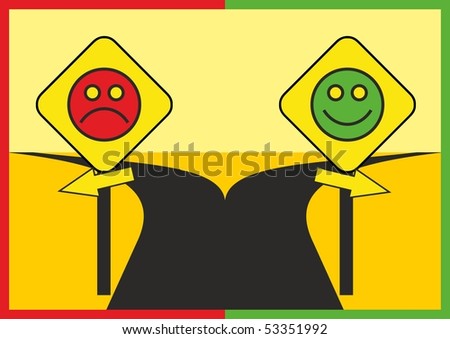| Topic: And You Want the Government Running Everything? | |
|---|---|
|
Edited by
InvictusV
on
Sat 09/24/11 05:07 AM
|
|
|
Gov't paid $600 million in benefits to dead people WASHINGTON (AP) -- The federal government has doled out more than $600 million in benefit payments to dead people over the past five years, a watchdog report says. Such payments are meant for retired or disabled federal workers, but sometimes the checks keep going out even after the former employees pass away and the deaths are not reported, according to the report this week from the Office of Personnel Management's inspector general, Patrick McFarland. In one case, the son of a beneficiary continued receiving payments for 37 years after his father's death in 1971. The payments - totaling more than $515,000 - were only discovered when the son died in 2008. "It is time to stop, once and for all, this waste of taxpayer money," it said. Office of Personnel Management Director John Berry said Friday that the agency has already adopted 10 of the inspector general's 14 recommendations for stopping the improper payments. "Though we have implemented many positive reforms, I remain deeply committed to keeping this a top priority and to working with our IG to ensure the proper internal controls are in place to protect the taxpayers and our employees and retirees," Berry said in a written statement. Berry said the agency is attempting to recoup its losses, including $113 million currently in collection. There are about 2.5 million federal workers who receive over $60 billion in benefit payments from the program each year. The improper payments represent less than two tenths of one percent of the program, Berry said. Federal officials have tried matching the fund's computer records with the Social Security Administration's death records, checking tax records and improving the timeliness of death reporting. OPM has also sampled its records of all recipients over 90 years old to confirm whether they are still alive. In 2009, there were more than 125,000 recipients identified as over 90 and about 3,400 over 100 years old. Both the Obama administration and Congress have made it a higher priority to crack down on improper government payments. Last year, government investigators found that more than 89,000 stimulus payments of $250 each from the massive economic recovery package went to people who were either dead or in prison. http://hosted.ap.org/dynamic/stories/U/US_BENEFITS_TO_DEAD_PEOPLE?SITE=AP&SECTION=HOME&TEMPLATE=DEFAULT&CTIME=2011-09-23-11-58-21 |
|
|
|
|
|
Seriously? a program so massive and only 600 million in errors? thats like batting.9999.
What are our choices the free market? Ever hear of Enron? |
|
|
|
|
|
Seriously? a program so massive and only 600 million in errors? thats like batting.9999. What are our choices the free market? Ever hear of Enron? yeah only $600 million.. That is just another loan to Solyndra. Maybe they could have stayed in business another month.. |
|
|
|
|
|
How about that free market run Fukushima disaster? have they evacuated Tokyo yet?
|
|
|
|
|
|
How about that free market run Fukushima disaster? have they evacuated Tokyo yet? Yeah let us have the government control earthquakes and tsunamis. They can just put union workers in charge of the tectonic plate shifting. |
|
|
|
|
|
The Deepwater Horizon oil spill (also referred to as the BP oil spill, the Gulf of Mexico oil spill, the BP oil disaster, or the Macondo blowout)[5][6][7] is an oil spill in the Gulf of Mexico which flowed for three months in 2010. It is the largest accidental marine oil spill in the history of the petroleum industry.[8][9][10] The spill stemmed from a sea-floor oil gusher that resulted from the April 20, 2010, explosion of Deepwater Horizon, which drilled on the BP-operated Macondo Prospect. The explosion killed 11 men working on the platform and injured 17 others.[11] On July 15, 2010, the leak was stopped by capping the gushing wellhead,[12] after it had released about 4.9 million barrels (780,000 m3) of crude oil.[3] An estimated 53,000 barrels per day (8,400 m³/d) escaped from the well just before it was capped.[10] It is believed that the daily flow rate diminished over time, starting at about 62,000 barrels per day (9,900 m³/d) and decreasing as the reservoir of hydrocarbons feeding the gusher was gradually depleted.[10] On September 19, 2010, the relief well process was successfully completed, and the federal government declared the well "effectively dead".[13] In August 2011, oil and oil sheen covering several square miles of water were reported surfacing not far from BP’s Macondo well.[14] Scientific analysis confirmed the oil is a chemical match for Macondo 252.[15][16] The Coast Guard said the oil was too dispersed to recover.[17]
The spill caused extensive damage to marine and wildlife habitats and to the Gulf's fishing and tourism industries.[18][19] Skimmer ships, floating containment booms, anchored barriers, sand-filled barricades along shorelines, and dispersants were used in an attempt to protect hundreds of miles of beaches, wetlands, and estuaries from the spreading oil. Scientists also reported immense underwater plumes of dissolved oil not visible at the surface[20] as well as an 80-square-mile (210 km²) "kill zone" surrounding the blown well.[21] In late November 2010, 4,200 square miles (11,000 km²) of the Gulf were re-closed to shrimping after tar balls were found in shrimpers' nets.[22] The amount of Louisiana shoreline affected by oil grew from 287 miles (462 km) in July to 320 miles (510 km) in late November 2010.[23] In January 2011, an oil spill commissioner reported that tar balls continue to wash up, oil sheen trails are seen in the wake of fishing boats, wetlands marsh grass remains fouled and dying, and crude oil lies offshore in deep water and in fine silts and sands onshore.[24] A research team found oil on the bottom of the seafloor in late February 2011 that did not seem to be degrading.[25] On May 26, 2011, the Louisiana Department of Environmental Quality extended the state of emergency related to the oil spill.[26] By July 9, 2011, roughly 491 miles (790 kilometers) of coastline in Louisiana, Mississippi, Alabama and Florida remained contaminated by BP oil, according to a NOAA spokesperson.[27 http://en.wikipedia.org/wiki/Deepwater_Horizon_oil_spill Now this is a disaster one that could possibly have been avoided had the government safety inspectors been on the job. Damn budget cuts. |
|
|
|
|
|
On another note.
I don't recall there being a free market system or earthquake and tsunami causing the meltdown at Chernobyl. That was good old fashioned communist incompetence. |
|
|
|
|
|
The Deepwater Horizon oil spill (also referred to as the BP oil spill, the Gulf of Mexico oil spill, the BP oil disaster, or the Macondo blowout)[5][6][7] is an oil spill in the Gulf of Mexico which flowed for three months in 2010. It is the largest accidental marine oil spill in the history of the petroleum industry.[8][9][10] The spill stemmed from a sea-floor oil gusher that resulted from the April 20, 2010, explosion of Deepwater Horizon, which drilled on the BP-operated Macondo Prospect. The explosion killed 11 men working on the platform and injured 17 others.[11] On July 15, 2010, the leak was stopped by capping the gushing wellhead,[12] after it had released about 4.9 million barrels (780,000 m3) of crude oil.[3] An estimated 53,000 barrels per day (8,400 m³/d) escaped from the well just before it was capped.[10] It is believed that the daily flow rate diminished over time, starting at about 62,000 barrels per day (9,900 m³/d) and decreasing as the reservoir of hydrocarbons feeding the gusher was gradually depleted.[10] On September 19, 2010, the relief well process was successfully completed, and the federal government declared the well "effectively dead".[13] In August 2011, oil and oil sheen covering several square miles of water were reported surfacing not far from BP’s Macondo well.[14] Scientific analysis confirmed the oil is a chemical match for Macondo 252.[15][16] The Coast Guard said the oil was too dispersed to recover.[17] The spill caused extensive damage to marine and wildlife habitats and to the Gulf's fishing and tourism industries.[18][19] Skimmer ships, floating containment booms, anchored barriers, sand-filled barricades along shorelines, and dispersants were used in an attempt to protect hundreds of miles of beaches, wetlands, and estuaries from the spreading oil. Scientists also reported immense underwater plumes of dissolved oil not visible at the surface[20] as well as an 80-square-mile (210 km²) "kill zone" surrounding the blown well.[21] In late November 2010, 4,200 square miles (11,000 km²) of the Gulf were re-closed to shrimping after tar balls were found in shrimpers' nets.[22] The amount of Louisiana shoreline affected by oil grew from 287 miles (462 km) in July to 320 miles (510 km) in late November 2010.[23] In January 2011, an oil spill commissioner reported that tar balls continue to wash up, oil sheen trails are seen in the wake of fishing boats, wetlands marsh grass remains fouled and dying, and crude oil lies offshore in deep water and in fine silts and sands onshore.[24] A research team found oil on the bottom of the seafloor in late February 2011 that did not seem to be degrading.[25] On May 26, 2011, the Louisiana Department of Environmental Quality extended the state of emergency related to the oil spill.[26] By July 9, 2011, roughly 491 miles (790 kilometers) of coastline in Louisiana, Mississippi, Alabama and Florida remained contaminated by BP oil, according to a NOAA spokesperson.[27 http://en.wikipedia.org/wiki/Deepwater_Horizon_oil_spill Now this is a disaster one that could possibly have been avoided had the government safety inspectors been on the job. Damn budget cuts. Very interesting.. Maybe you can explain why the Dept Of Interior disregarded NOAA's advice as to the potential impacts of a spill.. Notice the Date of Noaa's report.. 2009.. For Immediate Release: October 12, 2009 Contact: Kirsten Stade (202) 265-7337 NOAA RAISES RED FLAGS ON AGGRESSIVE OFFSHORE DRILLING PLAN — Exclusion Zones, Buffers and Oil Spill Protections Would Scale Back Lease Schedule Washington, DC — The National Oceanic & Atmospheric Administration urges that an ambitious lease schedule for oil and gas drilling on the Outer Continental Shelf be dramatically cut back, according to official comments posted today by Public Employees for Environmental Responsibility (PEER). NOAA recommends safeguards for fisheries, marine mammals and coastal populations that would significantly dial down the number and size of offshore tracts offered for exploration and development leasing. The NOAA comments were filed on September 21, 2009, the comment deadline for the Draft Proposed Outer Continental Shelf (OCS) Oil and Gas Leasing Program for 2010-2015 issued by the Interior Department’s Minerals Management Service (MMS). That plan issued in January reflects the pro-drilling approach of the outgoing Bush administration. It would offer 12 large lease areas (4 in Alaska, 3 in the Atlantic, 2 in the Pacific and 3 in the Gulf of Mexico) covering much of the American OCS. In its comments, NOAA laid out positions not heard during the Bush years, including: Exclusionary zones that would block lease sales in the Northern Aleutians (including Bristol Bay), near shore in the Chukchi Sea, as well as all the proposed Atlantic and Eastern Gulf tracts; Buffer zones that would bar drilling “around national marine sanctuaries, Habitat Areas of Particular Concern, Critical Habitat for endangered and threatened species, major fishing grounds and to provide visual buffers to coastal areas dependent upon tourism”; and A moratorium on any Arctic Ocean drilling until much better oil spill prevention and response capability is in place. NOAA also contends that MMS understates the expected frequency of and risk from spills, generally, noting aftereffects of Hurricanes Katrina and Rita among other factors. http://www.peer.org/news/news_id.php?row_id=1265 |
|
|
|
|
|
On another note. I don't recall there being a free market system or earthquake and tsunami causing the meltdown at Chernobyl. That was good old fashioned communist incompetence.  FUQUE YEAH! FUQUE YEAH! Let us not forget Three Mile Island which was operator error that almost ended Chernoyble Style! Seems like we dodged a bullet there! But now Iran and N Korea are building reactors and Iran spews a lot of anti-American hate... They are building longer and longer range missiles, and they both have reactors... Yet their people live in poverty and have militaristic regimes... And they are doing what exactly with their nuclear programs??? (BOMBS! WEAPONS!) Hmmmmmm. Can any of the liberally minded finger piointers explain this one to me? I think it would be lovely if Iran had a meltdown while trying to make Plutonium. What would be even better was if in the course of that meltdown it got even worst for them and went into a spontaneous reaction that yielded a mushroom cloud and pollution that will kill for MILLIONS of years to do themselves in with by their own ambitions..  One can dream! 
|
|
|
|
|
|
The Deepwater Horizon oil spill (also referred to as the BP oil spill, the Gulf of Mexico oil spill, the BP oil disaster, or the Macondo blowout)[5][6][7] is an oil spill in the Gulf of Mexico which flowed for three months in 2010. It is the largest accidental marine oil spill in the history of the petroleum industry.[8][9][10] The spill stemmed from a sea-floor oil gusher that resulted from the April 20, 2010, explosion of Deepwater Horizon, which drilled on the BP-operated Macondo Prospect. The explosion killed 11 men working on the platform and injured 17 others.[11] On July 15, 2010, the leak was stopped by capping the gushing wellhead,[12] after it had released about 4.9 million barrels (780,000 m3) of crude oil.[3] An estimated 53,000 barrels per day (8,400 m³/d) escaped from the well just before it was capped.[10] It is believed that the daily flow rate diminished over time, starting at about 62,000 barrels per day (9,900 m³/d) and decreasing as the reservoir of hydrocarbons feeding the gusher was gradually depleted.[10] On September 19, 2010, the relief well process was successfully completed, and the federal government declared the well "effectively dead".[13] In August 2011, oil and oil sheen covering several square miles of water were reported surfacing not far from BP’s Macondo well.[14] Scientific analysis confirmed the oil is a chemical match for Macondo 252.[15][16] The Coast Guard said the oil was too dispersed to recover.[17] The spill caused extensive damage to marine and wildlife habitats and to the Gulf's fishing and tourism industries.[18][19] Skimmer ships, floating containment booms, anchored barriers, sand-filled barricades along shorelines, and dispersants were used in an attempt to protect hundreds of miles of beaches, wetlands, and estuaries from the spreading oil. Scientists also reported immense underwater plumes of dissolved oil not visible at the surface[20] as well as an 80-square-mile (210 km²) "kill zone" surrounding the blown well.[21] In late November 2010, 4,200 square miles (11,000 km²) of the Gulf were re-closed to shrimping after tar balls were found in shrimpers' nets.[22] The amount of Louisiana shoreline affected by oil grew from 287 miles (462 km) in July to 320 miles (510 km) in late November 2010.[23] In January 2011, an oil spill commissioner reported that tar balls continue to wash up, oil sheen trails are seen in the wake of fishing boats, wetlands marsh grass remains fouled and dying, and crude oil lies offshore in deep water and in fine silts and sands onshore.[24] A research team found oil on the bottom of the seafloor in late February 2011 that did not seem to be degrading.[25] On May 26, 2011, the Louisiana Department of Environmental Quality extended the state of emergency related to the oil spill.[26] By July 9, 2011, roughly 491 miles (790 kilometers) of coastline in Louisiana, Mississippi, Alabama and Florida remained contaminated by BP oil, according to a NOAA spokesperson.[27 http://en.wikipedia.org/wiki/Deepwater_Horizon_oil_spill Now this is a disaster one that could possibly have been avoided had the government safety inspectors been on the job. Damn budget cuts. The trouble is that BP isnt an American Company and therefore can only be traked and bordedby the US in the Gulf of Mexico international water with permission.....that spill wasnt the neglect of the United States governement but more of a lack of ownership even though it hurt the United States and South America....the only thing we can do is put BP out of business in the US |
|
|
|
|
|
The Deepwater Horizon oil spill (also referred to as the BP oil spill, the Gulf of Mexico oil spill, the BP oil disaster, or the Macondo blowout)[5][6][7] is an oil spill in the Gulf of Mexico which flowed for three months in 2010. It is the largest accidental marine oil spill in the history of the petroleum industry.[8][9][10] The spill stemmed from a sea-floor oil gusher that resulted from the April 20, 2010, explosion of Deepwater Horizon, which drilled on the BP-operated Macondo Prospect. The explosion killed 11 men working on the platform and injured 17 others.[11] On July 15, 2010, the leak was stopped by capping the gushing wellhead,[12] after it had released about 4.9 million barrels (780,000 m3) of crude oil.[3] An estimated 53,000 barrels per day (8,400 m³/d) escaped from the well just before it was capped.[10] It is believed that the daily flow rate diminished over time, starting at about 62,000 barrels per day (9,900 m³/d) and decreasing as the reservoir of hydrocarbons feeding the gusher was gradually depleted.[10] On September 19, 2010, the relief well process was successfully completed, and the federal government declared the well "effectively dead".[13] In August 2011, oil and oil sheen covering several square miles of water were reported surfacing not far from BP’s Macondo well.[14] Scientific analysis confirmed the oil is a chemical match for Macondo 252.[15][16] The Coast Guard said the oil was too dispersed to recover.[17] The spill caused extensive damage to marine and wildlife habitats and to the Gulf's fishing and tourism industries.[18][19] Skimmer ships, floating containment booms, anchored barriers, sand-filled barricades along shorelines, and dispersants were used in an attempt to protect hundreds of miles of beaches, wetlands, and estuaries from the spreading oil. Scientists also reported immense underwater plumes of dissolved oil not visible at the surface[20] as well as an 80-square-mile (210 km²) "kill zone" surrounding the blown well.[21] In late November 2010, 4,200 square miles (11,000 km²) of the Gulf were re-closed to shrimping after tar balls were found in shrimpers' nets.[22] The amount of Louisiana shoreline affected by oil grew from 287 miles (462 km) in July to 320 miles (510 km) in late November 2010.[23] In January 2011, an oil spill commissioner reported that tar balls continue to wash up, oil sheen trails are seen in the wake of fishing boats, wetlands marsh grass remains fouled and dying, and crude oil lies offshore in deep water and in fine silts and sands onshore.[24] A research team found oil on the bottom of the seafloor in late February 2011 that did not seem to be degrading.[25] On May 26, 2011, the Louisiana Department of Environmental Quality extended the state of emergency related to the oil spill.[26] By July 9, 2011, roughly 491 miles (790 kilometers) of coastline in Louisiana, Mississippi, Alabama and Florida remained contaminated by BP oil, according to a NOAA spokesperson.[27 http://en.wikipedia.org/wiki/Deepwater_Horizon_oil_spill Now this is a disaster one that could possibly have been avoided had the government safety inspectors been on the job. Damn budget cuts. Very interesting.. Maybe you can explain why the Dept Of Interior disregarded NOAA's advice as to the potential impacts of a spill.. Notice the Date of Noaa's report.. 2009.. For Immediate Release: October 12, 2009 Contact: Kirsten Stade (202) 265-7337 NOAA RAISES RED FLAGS ON AGGRESSIVE OFFSHORE DRILLING PLAN — Exclusion Zones, Buffers and Oil Spill Protections Would Scale Back Lease Schedule Washington, DC — The National Oceanic & Atmospheric Administration urges that an ambitious lease schedule for oil and gas drilling on the Outer Continental Shelf be dramatically cut back, according to official comments posted today by Public Employees for Environmental Responsibility (PEER). NOAA recommends safeguards for fisheries, marine mammals and coastal populations that would significantly dial down the number and size of offshore tracts offered for exploration and development leasing. The NOAA comments were filed on September 21, 2009, the comment deadline for the Draft Proposed Outer Continental Shelf (OCS) Oil and Gas Leasing Program for 2010-2015 issued by the Interior Department’s Minerals Management Service (MMS). That plan issued in January reflects the pro-drilling approach of the outgoing Bush administration. It would offer 12 large lease areas (4 in Alaska, 3 in the Atlantic, 2 in the Pacific and 3 in the Gulf of Mexico) covering much of the American OCS. In its comments, NOAA laid out positions not heard during the Bush years, including: Exclusionary zones that would block lease sales in the Northern Aleutians (including Bristol Bay), near shore in the Chukchi Sea, as well as all the proposed Atlantic and Eastern Gulf tracts; Buffer zones that would bar drilling “around national marine sanctuaries, Habitat Areas of Particular Concern, Critical Habitat for endangered and threatened species, major fishing grounds and to provide visual buffers to coastal areas dependent upon tourism”; and A moratorium on any Arctic Ocean drilling until much better oil spill prevention and response capability is in place. NOAA also contends that MMS understates the expected frequency of and risk from spills, generally, noting aftereffects of Hurricanes Katrina and Rita among other factors. http://www.peer.org/news/news_id.php?row_id=1265 Proof our own government doesn't have the balls to impose limitations to protect us from big business! Free Market does not imply no regulations. That is a liberal belief. Not real world. In the real world a free market has regulations to protect itself from people who would destroy it using unscrupulous business practices. Deregulation leads ot the unscrupulous to do the damge they are doing now. Think BP gives a Rat's testicles if they have a spill in impotasnt breeding grounds for several species of commercially harvested fish like TUNA? Hell frikken aye not! And ogovernment is protecting us from them how exactly? STRONG WORDS? SPEECHES? How about MASSIVE Billion dollar fines? Yep, blaming the wrong people again and here Invictus is showing the way and the travelers here are not taking the right road again. Lost people believing they are on the right road.  Why is it people always think the smiley face is always right? |
|
|
|
|
|
On another note. I don't recall there being a free market system or earthquake and tsunami causing the meltdown at Chernobyl. That was good old fashioned communist incompetence.  FUQUE YEAH! FUQUE YEAH! Let us not forget Three Mile Island which was operator error that almost ended Chernoyble Style! Seems like we dodged a bullet there! But now Iran and N Korea are building reactors and Iran spews a lot of anti-American hate... They are building longer and longer range missiles, and they both have reactors... Yet their people live in poverty and have militaristic regimes... And they are doing what exactly with their nuclear programs??? (BOMBS! WEAPONS!) Hmmmmmm. Can any of the liberally minded finger piointers explain this one to me? I think it would be lovely if Iran had a meltdown while trying to make Plutonium. What would be even better was if in the course of that meltdown it got even worst for them and went into a spontaneous reaction that yielded a mushroom cloud and pollution that will kill for MILLIONS of years to do themselves in with by their own ambitions..  One can dream!  don't forget hanover, WA either... we were about a week away from losing the state of washington too... |
|
|
|
|
|
The Deepwater Horizon oil spill (also referred to as the BP oil spill, the Gulf of Mexico oil spill, the BP oil disaster, or the Macondo blowout)[5][6][7] is an oil spill in the Gulf of Mexico which flowed for three months in 2010. It is the largest accidental marine oil spill in the history of the petroleum industry.[8][9][10] The spill stemmed from a sea-floor oil gusher that resulted from the April 20, 2010, explosion of Deepwater Horizon, which drilled on the BP-operated Macondo Prospect. The explosion killed 11 men working on the platform and injured 17 others.[11] On July 15, 2010, the leak was stopped by capping the gushing wellhead,[12] after it had released about 4.9 million barrels (780,000 m3) of crude oil.[3] An estimated 53,000 barrels per day (8,400 m³/d) escaped from the well just before it was capped.[10] It is believed that the daily flow rate diminished over time, starting at about 62,000 barrels per day (9,900 m³/d) and decreasing as the reservoir of hydrocarbons feeding the gusher was gradually depleted.[10] On September 19, 2010, the relief well process was successfully completed, and the federal government declared the well "effectively dead".[13] In August 2011, oil and oil sheen covering several square miles of water were reported surfacing not far from BP’s Macondo well.[14] Scientific analysis confirmed the oil is a chemical match for Macondo 252.[15][16] The Coast Guard said the oil was too dispersed to recover.[17] The spill caused extensive damage to marine and wildlife habitats and to the Gulf's fishing and tourism industries.[18][19] Skimmer ships, floating containment booms, anchored barriers, sand-filled barricades along shorelines, and dispersants were used in an attempt to protect hundreds of miles of beaches, wetlands, and estuaries from the spreading oil. Scientists also reported immense underwater plumes of dissolved oil not visible at the surface[20] as well as an 80-square-mile (210 km²) "kill zone" surrounding the blown well.[21] In late November 2010, 4,200 square miles (11,000 km²) of the Gulf were re-closed to shrimping after tar balls were found in shrimpers' nets.[22] The amount of Louisiana shoreline affected by oil grew from 287 miles (462 km) in July to 320 miles (510 km) in late November 2010.[23] In January 2011, an oil spill commissioner reported that tar balls continue to wash up, oil sheen trails are seen in the wake of fishing boats, wetlands marsh grass remains fouled and dying, and crude oil lies offshore in deep water and in fine silts and sands onshore.[24] A research team found oil on the bottom of the seafloor in late February 2011 that did not seem to be degrading.[25] On May 26, 2011, the Louisiana Department of Environmental Quality extended the state of emergency related to the oil spill.[26] By July 9, 2011, roughly 491 miles (790 kilometers) of coastline in Louisiana, Mississippi, Alabama and Florida remained contaminated by BP oil, according to a NOAA spokesperson.[27 http://en.wikipedia.org/wiki/Deepwater_Horizon_oil_spill Now this is a disaster one that could possibly have been avoided had the government safety inspectors been on the job. Damn budget cuts. The trouble is that BP isnt an American Company and therefore can only be traked and bordedby the US in the Gulf of Mexico international water with permission.....that spill wasnt the neglect of the United States governement but more of a lack of ownership even though it hurt the United States and South America....the only thing we can do is put BP out of business in the US Realy nothing compared to this. The United States has spent more than a quarter of a trillion dollars during its three years in Iraq, and more than $50 billion of it has gone to private contractors hired to guard bases, drive trucks, feed and shelter the troops and rebuild the country. It is dangerous work, but much of the $50 billion, which is more than the annual budget of the Department of Homeland Security, has been handed out to companies in Iraq with little or no oversight. Billions of dollars are unaccounted for, and there are widespread allegations of waste, fraud and war profiteering. http://www.cbsnews.com/stories/2006/02/09/60minutes/main1302378.shtml |
|
|
|
|
|
The Deepwater Horizon oil spill (also referred to as the BP oil spill, the Gulf of Mexico oil spill, the BP oil disaster, or the Macondo blowout)[5][6][7] is an oil spill in the Gulf of Mexico which flowed for three months in 2010. It is the largest accidental marine oil spill in the history of the petroleum industry.[8][9][10] The spill stemmed from a sea-floor oil gusher that resulted from the April 20, 2010, explosion of Deepwater Horizon, which drilled on the BP-operated Macondo Prospect. The explosion killed 11 men working on the platform and injured 17 others.[11] On July 15, 2010, the leak was stopped by capping the gushing wellhead,[12] after it had released about 4.9 million barrels (780,000 m3) of crude oil.[3] An estimated 53,000 barrels per day (8,400 m³/d) escaped from the well just before it was capped.[10] It is believed that the daily flow rate diminished over time, starting at about 62,000 barrels per day (9,900 m³/d) and decreasing as the reservoir of hydrocarbons feeding the gusher was gradually depleted.[10] On September 19, 2010, the relief well process was successfully completed, and the federal government declared the well "effectively dead".[13] In August 2011, oil and oil sheen covering several square miles of water were reported surfacing not far from BP’s Macondo well.[14] Scientific analysis confirmed the oil is a chemical match for Macondo 252.[15][16] The Coast Guard said the oil was too dispersed to recover.[17] The spill caused extensive damage to marine and wildlife habitats and to the Gulf's fishing and tourism industries.[18][19] Skimmer ships, floating containment booms, anchored barriers, sand-filled barricades along shorelines, and dispersants were used in an attempt to protect hundreds of miles of beaches, wetlands, and estuaries from the spreading oil. Scientists also reported immense underwater plumes of dissolved oil not visible at the surface[20] as well as an 80-square-mile (210 km²) "kill zone" surrounding the blown well.[21] In late November 2010, 4,200 square miles (11,000 km²) of the Gulf were re-closed to shrimping after tar balls were found in shrimpers' nets.[22] The amount of Louisiana shoreline affected by oil grew from 287 miles (462 km) in July to 320 miles (510 km) in late November 2010.[23] In January 2011, an oil spill commissioner reported that tar balls continue to wash up, oil sheen trails are seen in the wake of fishing boats, wetlands marsh grass remains fouled and dying, and crude oil lies offshore in deep water and in fine silts and sands onshore.[24] A research team found oil on the bottom of the seafloor in late February 2011 that did not seem to be degrading.[25] On May 26, 2011, the Louisiana Department of Environmental Quality extended the state of emergency related to the oil spill.[26] By July 9, 2011, roughly 491 miles (790 kilometers) of coastline in Louisiana, Mississippi, Alabama and Florida remained contaminated by BP oil, according to a NOAA spokesperson.[27 http://en.wikipedia.org/wiki/Deepwater_Horizon_oil_spill Now this is a disaster one that could possibly have been avoided had the government safety inspectors been on the job. Damn budget cuts. The trouble is that BP isnt an American Company and therefore can only be traked and bordedby the US in the Gulf of Mexico international water with permission.....that spill wasnt the neglect of the United States governement but more of a lack of ownership even though it hurt the United States and South America....the only thing we can do is put BP out of business in the US Realy nothing compared to this. The United States has spent more than a quarter of a trillion dollars during its three years in Iraq, and more than $50 billion of it has gone to private contractors hired to guard bases, drive trucks, feed and shelter the troops and rebuild the country. It is dangerous work, but much of the $50 billion, which is more than the annual budget of the Department of Homeland Security, has been handed out to companies in Iraq with little or no oversight. Billions of dollars are unaccounted for, and there are widespread allegations of waste, fraud and war profiteering. http://www.cbsnews.com/stories/2006/02/09/60minutes/main1302378.shtml Just because it doesnt compare, doesnt mean it doesnt count |
|
|
|
|
|
Some things are unavoidable,, like the fact that people will be greedy (Whether it be companies skipping safety guidelines or individuals accepting payments that are meant for someone else...)
|
|
|
|
|
|
The Deepwater Horizon oil spill (also referred to as the BP oil spill, the Gulf of Mexico oil spill, the BP oil disaster, or the Macondo blowout)[5][6][7] is an oil spill in the Gulf of Mexico which flowed for three months in 2010. It is the largest accidental marine oil spill in the history of the petroleum industry.[8][9][10] The spill stemmed from a sea-floor oil gusher that resulted from the April 20, 2010, explosion of Deepwater Horizon, which drilled on the BP-operated Macondo Prospect. The explosion killed 11 men working on the platform and injured 17 others.[11] On July 15, 2010, the leak was stopped by capping the gushing wellhead,[12] after it had released about 4.9 million barrels (780,000 m3) of crude oil.[3] An estimated 53,000 barrels per day (8,400 m³/d) escaped from the well just before it was capped.[10] It is believed that the daily flow rate diminished over time, starting at about 62,000 barrels per day (9,900 m³/d) and decreasing as the reservoir of hydrocarbons feeding the gusher was gradually depleted.[10] On September 19, 2010, the relief well process was successfully completed, and the federal government declared the well "effectively dead".[13] In August 2011, oil and oil sheen covering several square miles of water were reported surfacing not far from BP’s Macondo well.[14] Scientific analysis confirmed the oil is a chemical match for Macondo 252.[15][16] The Coast Guard said the oil was too dispersed to recover.[17] The spill caused extensive damage to marine and wildlife habitats and to the Gulf's fishing and tourism industries.[18][19] Skimmer ships, floating containment booms, anchored barriers, sand-filled barricades along shorelines, and dispersants were used in an attempt to protect hundreds of miles of beaches, wetlands, and estuaries from the spreading oil. Scientists also reported immense underwater plumes of dissolved oil not visible at the surface[20] as well as an 80-square-mile (210 km²) "kill zone" surrounding the blown well.[21] In late November 2010, 4,200 square miles (11,000 km²) of the Gulf were re-closed to shrimping after tar balls were found in shrimpers' nets.[22] The amount of Louisiana shoreline affected by oil grew from 287 miles (462 km) in July to 320 miles (510 km) in late November 2010.[23] In January 2011, an oil spill commissioner reported that tar balls continue to wash up, oil sheen trails are seen in the wake of fishing boats, wetlands marsh grass remains fouled and dying, and crude oil lies offshore in deep water and in fine silts and sands onshore.[24] A research team found oil on the bottom of the seafloor in late February 2011 that did not seem to be degrading.[25] On May 26, 2011, the Louisiana Department of Environmental Quality extended the state of emergency related to the oil spill.[26] By July 9, 2011, roughly 491 miles (790 kilometers) of coastline in Louisiana, Mississippi, Alabama and Florida remained contaminated by BP oil, according to a NOAA spokesperson.[27 http://en.wikipedia.org/wiki/Deepwater_Horizon_oil_spill Now this is a disaster one that could possibly have been avoided had the government safety inspectors been on the job. Damn budget cuts. The trouble is that BP isnt an American Company and therefore can only be traked and bordedby the US in the Gulf of Mexico international water with permission.....that spill wasnt the neglect of the United States governement but more of a lack of ownership even though it hurt the United States and South America....the only thing we can do is put BP out of business in the US Realy nothing compared to this. The United States has spent more than a quarter of a trillion dollars during its three years in Iraq, and more than $50 billion of it has gone to private contractors hired to guard bases, drive trucks, feed and shelter the troops and rebuild the country. It is dangerous work, but much of the $50 billion, which is more than the annual budget of the Department of Homeland Security, has been handed out to companies in Iraq with little or no oversight. Billions of dollars are unaccounted for, and there are widespread allegations of waste, fraud and war profiteering. http://www.cbsnews.com/stories/2006/02/09/60minutes/main1302378.shtml now that i believe, 500 billion dollars a year for war? all the other wars in history does not add up to that much.... |
|
|
|
|
|
But now Iran and N Korea are building reactors and Iran spews a lot of anti-American hate... They are building longer and longer range missiles, and they both have reactors... Yet their people live in poverty Iran's distribution of wealth is almost identical to that in the United States. |
|
|
|
|
|
But now Iran and N Korea are building reactors and Iran spews a lot of anti-American hate... They are building longer and longer range missiles, and they both have reactors... Yet their people live in poverty Iran's distribution of wealth is almost identical to that in the United States. IN Tehran MAYBE. |
|
|
|
|
|
Iran's distribution of wealth is almost identical to that in the United States. IN Tehran MAYBE. Maybe you know something about Iran that the rest of us don't know. Iran, as whole country, has a whole lot of oil money. It is distributed among the population almost identically to the way America's wealth is distributed amongst its population. Don't really understand what point you're trying to make here. |
|
|
|
|
|
Iran's distribution of wealth is almost identical to that in the United States. IN Tehran MAYBE. Maybe you know something about Iran that the rest of us don't know. Iran, as whole country, has a whole lot of oil money. It is distributed among the population almost identically to the way America's wealth is distributed amongst its population. Don't really understand what point you're trying to make here. Have you lived there? Wealth if is is distributed like there means they have a larger problem with Poverty than you seem to believe. Look at how wealth is distributed here and repeat me this line again, "Iran's distribution of wealth is almost identical to that in the United States." We sure seem to have a huge poverty problem here. Imagine what it would be like living in a Theocrisy. Iraq was a wealthy nation under Saddam (`Till we fuqued them up). Look at what it was like then (under Saddam) when Iraq HAD order and Oil money. Also remember that Iran under the Shaw DID have prosperity for the masses but likewise had a huge corruption problem. Things are NOT like they were under the Shaw of Iran. Iran does not have the prosperity they boast. If anything they are a Middle Eastern North Korea! |
|
|
|
|













